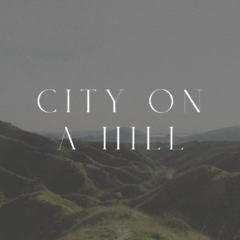

In this episode, we discuss the important role of intermediate institutions. Those organizations that are bigger than your family and smaller than the government provide you with relationships, resources, education, and service opportunities are what we refer to as intermediate institutions. They provide social capital and form the fabric of America.
NOTES:
In 1831, during his historic visit to the United States, Alexis de Tocqueville observed:
“Americans of all ages, conditions, and dispositions constantly unite together. Not only do they have commercial and industrial associations to which all belong but also a thousand other kinds, religious, moral, serious, futile…Americans group together to hold fetes, found seminaries, build inns, construct churches, distribute books…They establish prisons, schools by the same method…I have frequently admired the endless skill with which the inhabitants of the United States manage to set a common aim to the efforts of a great number of men and to persuade them to pursue it voluntarily.”
Robert Putnam speaks of two main components of the concept, the creation of which Putnam credits to Ross Gittell and Avis Vidal:
- Bonding social capital: the value assigned to social networks between homogeneous groups of people.
- Bridging social capital: the value assigned to social networks between socially heterogeneous groups.
Typical examples are that criminal gangs create bonding social capital, while choirs and bowling clubs (hence the title, as Putnam lamented their decline) create bridging social capital.
RECAP & TAKEAWAYS:
The deterioration of social capital and intermediate institutions has been identified as a cause for all sorts of social problems. Political polarization, gangs, mental illness and many more things result from the loss of social capital.
Four ways intermediate institutions build social capital:
- Information flows (e.g. learning about jobs, learning about candidates running for office, exchanging ideas at college, etc.) depend on social capital.
- Norms of reciprocity (mutual aid) rely on social networks. Bonding networks that connect folks who are similar sustain particularized (in-group) reciprocity. Bridging networks that connect individuals who are diverse sustain generalized reciprocity.
- Collective action depends upon social networks (e.g., the role that the black church played in the Civil Rights movement) although collective action also can foster new networks.
- Broader identities and solidarity are encouraged by social networks that help translate an “I” mentality into a “we” mentality. — Social Capital Primer, Bowling Alone
Do you have relationships and social bonds in your life? Where do you find them?
GET IN TOUCH:
We’d love to hear from you. Please send us an email or question at [email protected]. Or, leave us a voice recording at https://www.speakpipe.com/cityonahillpodcast.
MUSIC:
Little Lily Swing, Tri-Tachyon, Attribution-Noncommercial 4.0 International, https://freemusicarchive.org/music/Tri-Tachyon/the-kleptotonic-ep/little-lily-swing
Sorry, Comfort Fit, Attribution-NonCommercial-NoDerivs 3.0 Germany (CC BY-NC-ND 3.0 DE), https://freemusicarchive.org/music/Comfort_Fit/Forget_And_Remember/03_Sorry
